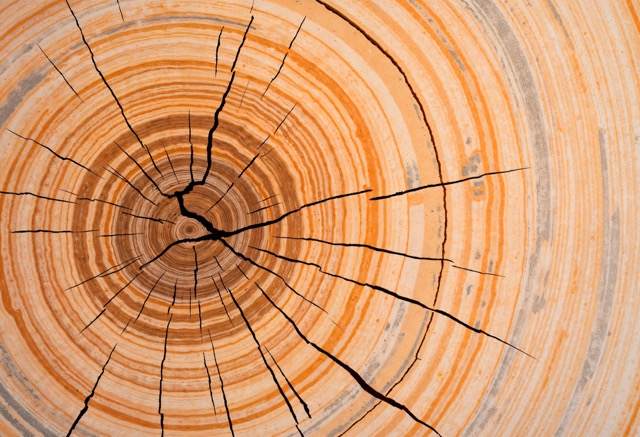How Spermidine may influence the way we look
Spermidine and its potential role in promoting beauty and skin health

Andre Furtado
The search for natural methods to preserve and improve beauty is as old as history itself and widespread. In recent years, spermidine, a naturally occurring polyamine compound that is found in all living cells, has come into focus. Numerous studies have shown that spermidine has various biological functions and is associated with a wide range of health benefits. In particular, spermidine could play a role in influencing the skin aging process, hair health, and cell protection.
Anti-aging effects
One of spermidine's most fascinating properties is its potential ability to slow down the skin's aging process. Research has shown that spermidine can stimulate autophagy, a process in which damaged cell components are broken down and recycled. By activating autophagy, spermidine could help reduce the appearance of wrinkles and fine lines by promoting cell renewal and improving skin texture.
An additional benefit of spermidine is its antioxidant properties, which can help protect skin from free radicals and oxidative stress. Free radicals are reactive molecules that cause cell damage and can therefore also accelerate skin aging. This anti-aging agent can contribute to healthier-looking skin and reduce the appearance of wrinkles, fine lines, and blemishes.
Spermidine for healthy hair
Healthy hair is another promising application of spermidine. Oxidative stress and free radicals can damage hair follicles and thus impair hair growth.
Animal studies have shown that spermidine can stimulate hair growth in mice by promoting hair follicle cell proliferation. This means that it can stimulate the growth of new hair cells, which could lead to increased hair density and volume. Clinically relevant data provide the first direct evidence that spermidine is an effective stimulator of human hair growth and a previously unknown modulator of human stem cell biology. Spermidine also increases melanin synthesis, which suggests that the polyamine could be used to prevent hair from turning gray.
Since spermidine levels decrease over time, particular attention should be paid to a spermidine-rich diet from the age of 30 or spermidine should be taken in the form of dietary supplements to prevent loss in old age. The market for spermidine-rich dietary supplements has grown significantly in recent years due to the importance of the substance. But not all products deliver what they promise. For those who want to consume 100% natural spermidine, we recommend the products from spermidineLIFE. The world's first spermidine-rich dietary supplement spermidineLIFE was developed in collaboration with the University of Graz. It is produced in Graz under the strictest quality controls and is used in studies worldwide.

References
- Ramot, Y., Tiede, S., Bíró, T., Bakar, M.H.A., Sugawara, K., Philpott, M.R., Harrison, W.J., Pietilae, M. & Paus, R. (2011). Spermidine Promotes Human Hair Growth and Is a Novel Modulator of Human Epithelial Stem Cell Functions. PLOS ONE, 6(7), e22564. https://doi.org/10.1371/journal.pone.0022564
- Kang, S.H. & Kim, M. (2021). Spermidine promotes melanin production through an MITF signalling pathway. Cell Biochemistry andFunction, 39(4) ,536—545. https://doi.org/10.1002/cbf.3619
- Brito, S., Heo, H., Cha, B., Lee, S., Chae, S., Lee, M., Kwak, B. S. & Bin, B. (2022) .A systematic exploration reveals the potential of spermidine forhypopigmentation treatment through the stabilization of melanogenesis-associated proteins. ScientificReports, 12(1). https://doi.org/10.1038/s41598-022-18629-3
- Rahim, A., Lim, H.Y., Tan, C., Jia, L., Leo, V.I., Uemura, T., Hardman, J.A., Common, J.E., Lim, T.C., Bellanger, S., Paus, R., Igarashi, K., Yang, H. & Vardy, L.A. (2021). The Polyamine Regulator AMD1 Upregulates Spermine Levels to Drive Epidermal Differentiation. Journal of Investigative Dermatology, 141(9) ,2178-2188.e6. https://doi.org/10.1016/j.jid.2021.01.039
- Ramot, Y., Marzani, B., Pinto, D., Klöpper, J.E. & Paus, R. (2015) .n1-methylspermidine, a stable spermidine analog, prolongs anagen and regulates epithelial stem cell functions in human hair follicles. Archives of Dermatological Research, 307(9), 841—847. https://doi.org/10.1007/s00403-015-1592-9
Publiziert
22.7.2024
Kategorie
Lifestyle

Experte
The search for natural methods to preserve and improve beauty is as old as history itself and widespread. In recent years, spermidine, a naturally occurring polyamine compound that is found in all living cells, has come into focus. Numerous studies have shown that spermidine has various biological functions and is associated with a wide range of health benefits. In particular, spermidine could play a role in influencing the skin aging process, hair health, and cell protection.
Anti-aging effects
One of spermidine's most fascinating properties is its potential ability to slow down the skin's aging process. Research has shown that spermidine can stimulate autophagy, a process in which damaged cell components are broken down and recycled. By activating autophagy, spermidine could help reduce the appearance of wrinkles and fine lines by promoting cell renewal and improving skin texture.
An additional benefit of spermidine is its antioxidant properties, which can help protect skin from free radicals and oxidative stress. Free radicals are reactive molecules that cause cell damage and can therefore also accelerate skin aging. This anti-aging agent can contribute to healthier-looking skin and reduce the appearance of wrinkles, fine lines, and blemishes.
Spermidine for healthy hair
Healthy hair is another promising application of spermidine. Oxidative stress and free radicals can damage hair follicles and thus impair hair growth.
Animal studies have shown that spermidine can stimulate hair growth in mice by promoting hair follicle cell proliferation. This means that it can stimulate the growth of new hair cells, which could lead to increased hair density and volume. Clinically relevant data provide the first direct evidence that spermidine is an effective stimulator of human hair growth and a previously unknown modulator of human stem cell biology. Spermidine also increases melanin synthesis, which suggests that the polyamine could be used to prevent hair from turning gray.
Since spermidine levels decrease over time, particular attention should be paid to a spermidine-rich diet from the age of 30 or spermidine should be taken in the form of dietary supplements to prevent loss in old age. The market for spermidine-rich dietary supplements has grown significantly in recent years due to the importance of the substance. But not all products deliver what they promise. For those who want to consume 100% natural spermidine, we recommend the products from spermidineLIFE. The world's first spermidine-rich dietary supplement spermidineLIFE was developed in collaboration with the University of Graz. It is produced in Graz under the strictest quality controls and is used in studies worldwide.

Experte
Referenzen
- Ramot, Y., Tiede, S., Bíró, T., Bakar, M.H.A., Sugawara, K., Philpott, M.R., Harrison, W.J., Pietilae, M. & Paus, R. (2011). Spermidine Promotes Human Hair Growth and Is a Novel Modulator of Human Epithelial Stem Cell Functions. PLOS ONE, 6(7), e22564. https://doi.org/10.1371/journal.pone.0022564
- Kang, S.H. & Kim, M. (2021). Spermidine promotes melanin production through an MITF signalling pathway. Cell Biochemistry andFunction, 39(4) ,536—545. https://doi.org/10.1002/cbf.3619
- Brito, S., Heo, H., Cha, B., Lee, S., Chae, S., Lee, M., Kwak, B. S. & Bin, B. (2022) .A systematic exploration reveals the potential of spermidine forhypopigmentation treatment through the stabilization of melanogenesis-associated proteins. ScientificReports, 12(1). https://doi.org/10.1038/s41598-022-18629-3
- Rahim, A., Lim, H.Y., Tan, C., Jia, L., Leo, V.I., Uemura, T., Hardman, J.A., Common, J.E., Lim, T.C., Bellanger, S., Paus, R., Igarashi, K., Yang, H. & Vardy, L.A. (2021). The Polyamine Regulator AMD1 Upregulates Spermine Levels to Drive Epidermal Differentiation. Journal of Investigative Dermatology, 141(9) ,2178-2188.e6. https://doi.org/10.1016/j.jid.2021.01.039
- Ramot, Y., Marzani, B., Pinto, D., Klöpper, J.E. & Paus, R. (2015) .n1-methylspermidine, a stable spermidine analog, prolongs anagen and regulates epithelial stem cell functions in human hair follicles. Archives of Dermatological Research, 307(9), 841—847. https://doi.org/10.1007/s00403-015-1592-9
Publiziert
22.7.2024
Kategorie
Lifestyle

.svg)














